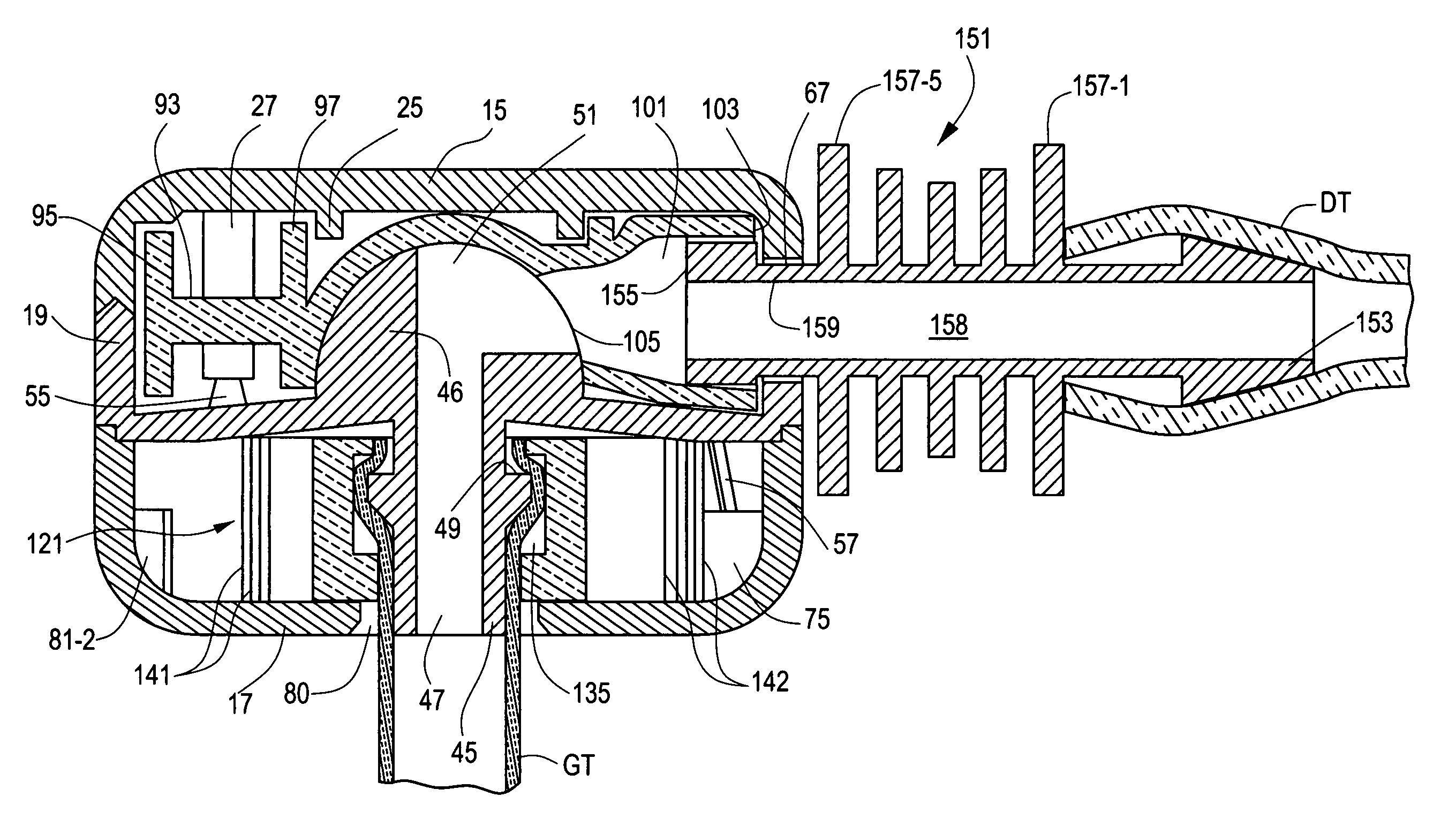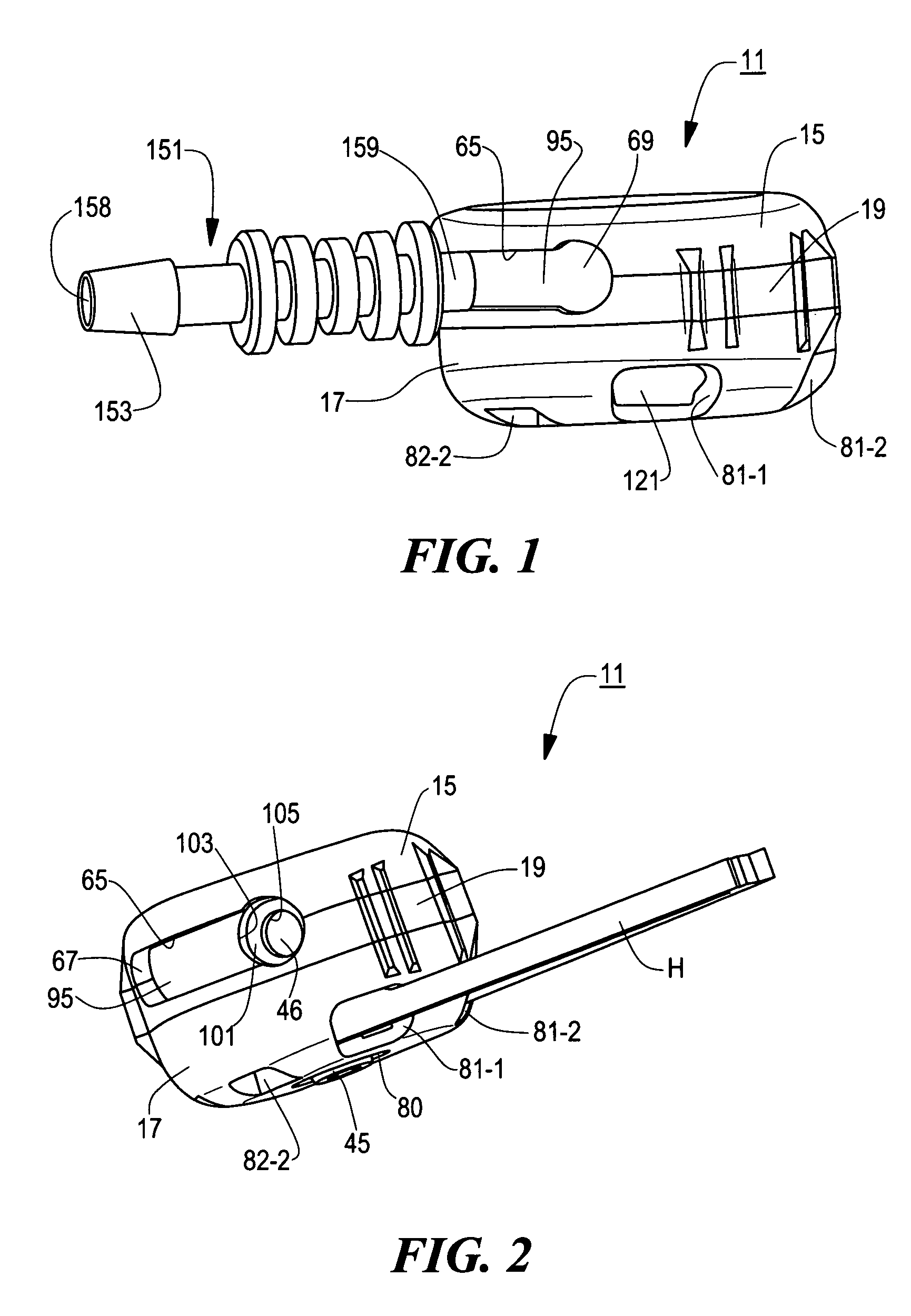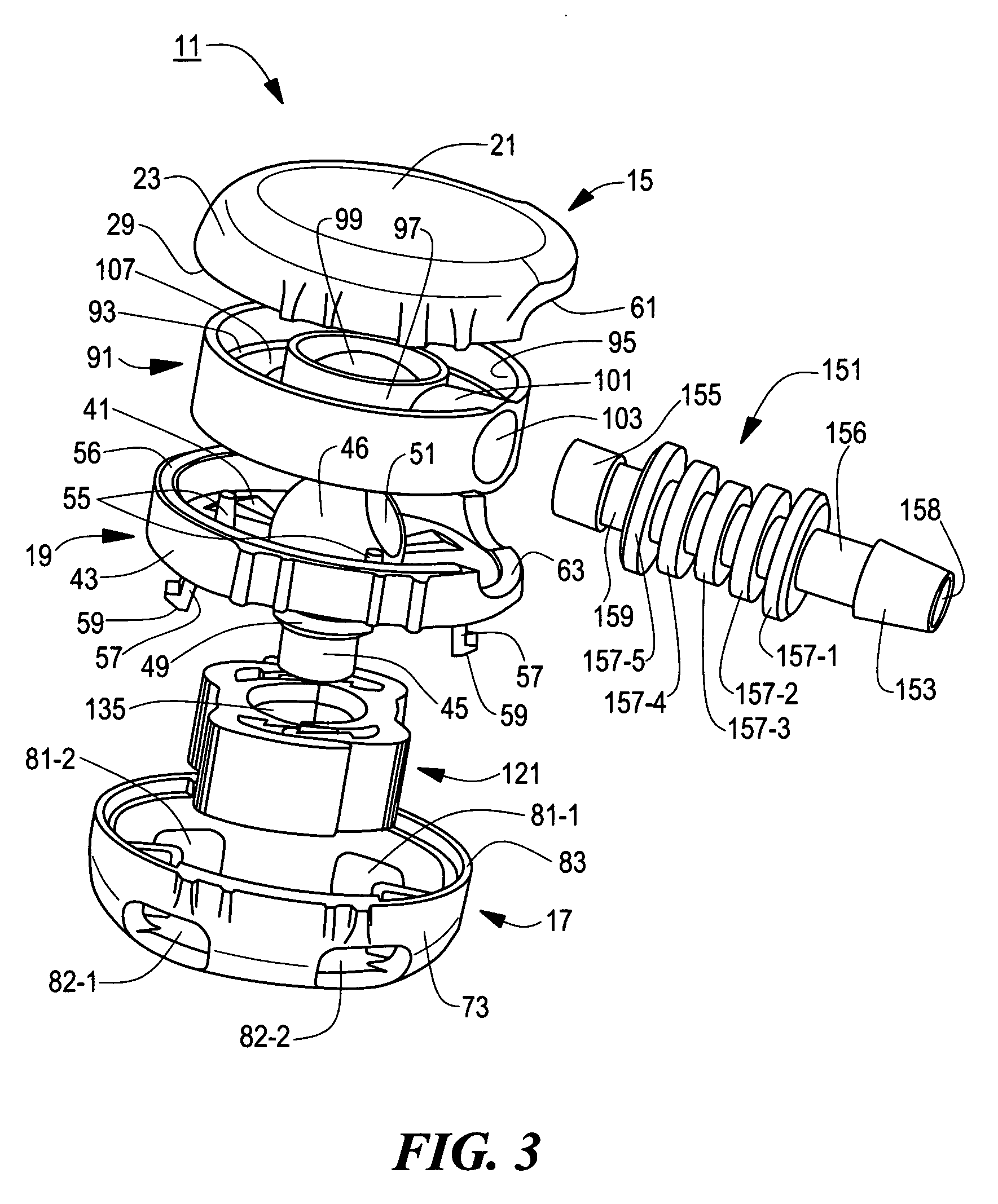Low profile adaptor for use with a medical catheter
a technology for adaptors and medical catheters, applied in the field of low-profile adaptors for use with medical catheters, can solve the problems of unsuitable long-term, nearly one foot length of tubing that extends externally, unwieldy, etc., and achieve the effect of low profil
- Summary
- Abstract
- Description
- Claims
- Application Information
AI Technical Summary
Benefits of technology
Problems solved by technology
Method used
Image
Examples
first embodiment
[0052] Referring now to FIGS. 1 through 6, there are shown various views of a low profile adaptor constructed according to the teachings of the present invention for use with a medical catheter, such as a gastrostomy feeding tube, said low profile adaptor being represented generally by reference numeral 11.
[0053] Adaptor 11 comprises an upper housing member 15, a lower housing member 17 and an intermediate housing member 19, the collection of which define a generally disk-shaped housing.
[0054] Upper housing member 15 is shaped to include a generally circular top wall 21, a side wall 23 extending downwardly a short distance from the perimeter of top wall 21, and an open bottom. A circular ridge 25, the function of which will become apparent below, is formed on the bottom surface of top wall 21, ridge 25 being positioned concentrically around the center of top wall 21 and extending downwardly a short distance therefrom. Three posts 27, the function of which will also become apparent ...
second embodiment
[0072] Referring now to FIG. 15, there is shown a section view of a low profile adaptor constructed according to the teachings of the present invention for use with a medical catheter, such as a gastrostomy feeding tube, said low profile adaptor being represented generally by reference numeral 201.
[0073] Adaptor 201 is similar in many respects to adaptor 11, the principal differences between the two adaptors being (i) that lower housing member 17 of adaptor 11 is replaced with lower housing member 203 in adaptor 201 and (ii) that adaptor 201 does not include clamp 121.
[0074] Lower housing member 203 is similar in many respects to lower housing member 17, the principal differences between the two lower housing members being (i) that lower housing member 203 does not include openings 81-1, 81-2, 82-1 and 82-2 and (ii) that lower housing member 203 is shaped to further include a sleeve 205 extending upwardly from opening 80.
[0075] Sleeve 205, which is a resilient member capable of fl...
third embodiment
[0079] Referring now to FIG. 18, there is shown a section view of a low profile adaptor constructed according to the teachings of the present invention for use with a medical catheter, such as a gastrostomy feeding tube, said low profile adaptor being represented generally by reference numeral 301.
[0080] Adaptor 301 is similar in many respects to adaptor 201, the principal differences between the two adaptors being (i) that intermediate housing member 19 of adaptor 201 is replaced with intermediate housing member 303 in adaptor 301 and (ii) that lower housing member 203 of adaptor 201 is replaced with the combination of a length of longitudinally compressible tubing 305 and an annular snap 307.
[0081] Intermediate housing member 303 is identical to intermediate housing member 19, except that intermediate housing member 303 does not include legs 57.
[0082] Tubing 305, which is preferably made of an elastomeric material, such as silicone rubber, is fixed at a first end 305-1 to interm...
PUM
 Login to View More
Login to View More Abstract
Description
Claims
Application Information
 Login to View More
Login to View More - R&D
- Intellectual Property
- Life Sciences
- Materials
- Tech Scout
- Unparalleled Data Quality
- Higher Quality Content
- 60% Fewer Hallucinations
Browse by: Latest US Patents, China's latest patents, Technical Efficacy Thesaurus, Application Domain, Technology Topic, Popular Technical Reports.
© 2025 PatSnap. All rights reserved.Legal|Privacy policy|Modern Slavery Act Transparency Statement|Sitemap|About US| Contact US: help@patsnap.com



